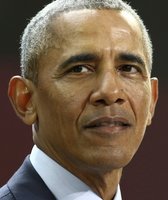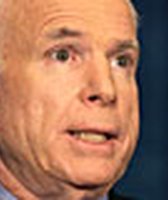Stand up for the facts!
Our only agenda is to publish the truth so you can be an informed participant in democracy.
We need your help.
I would like to contribute
SUMMARY: Rudy Giuliani isn't the only presidential candidate taking credit for making New York City safer. A senator from Delaware is, too.
And like Giuliani, Sen. Joe Biden, who is seeking the Democratic nomination for president, often overstates his role in the falling crime rates of the 1990s.
During debates, in interviews and in his campaign literature, Biden contends he was crucial to the crime decline because he sponsored legislation in 1994 creating the Community Oriented Policing Services, or COPS, program that was designed to put 100,000 more sworn officers on the street through 2001.
Biden uses his leadership on COPS as part of his pitch that he has the experience and vision for the White House.
Giuliani, meanwhile, has made New York's impressive crime decline during his tenure as mayor a central theme of his campaign for the Republican nomination.
Sign up for PolitiFact texts
"Here's a man who brags about how he made the city safe," Biden said of Giuliani during the Democratic debate last week in Philadelphia. "It was the Biden crime bill that became the Clinton crime bill that allowed him to do that."
On his campaign Web site, Biden makes an even bolder claim: "In the 1990s, the Biden Crime Bill added 100,000 cops to America's streets. As a result, murder and violent crime rates went down eight years in a row."
Crime did drop eight consecutive years; from 1993 to 2001, violent crime fell 32 percent. But tying the decline to COPS is a leap Biden just can't back up.
"That's a hopelessly simplistic statement," said John Worrall, a criminologist at the University of Texas at Dallas and lead author of a recent study in the journal Criminology that examined the effectiveness of COPS.
His research, published this year, came to the same conclusion as several independent and government studies over the years: The COPS program probably had little effect, if any, on falling crime in the 1990s.
More officers certainly doesn't hurt, experts say. But criminologists have been unable to prove a significant correlation between a few more cops and less crime.
Many other factors are at play and, in fact, crime began falling in the United States three years before COPS existed.
The number of officers hired through COPS also was relatively small. Worrall's study found, for instance, that the average police department's share of COPS grants accounted for only one-half of 1 percent of the department's budget.
Meanwhile, a critical 2005 study by the Government Accountability Office, the nonpartisan investigative arm of Congress, found that officers hired through COPS represented less than 3 percent of officers nationwide — not nearly enough to account for the major shift in crime trends the nation enjoyed in the 1990s.
"Nationally, it's hard to imagine how the COPS program would make a difference," said Jeffrey A. Fagan, co-director of the Center for Crime, Community and Law at Columbia Law School. He has studied New York and national crime trends for years. "This is akin to a small dose of medicine. Can a small dose cause a big effect? Only if it's a wonder drug."
The Justice Department's office of Community Oriented Policing Services says the program put its 100,000th officer on the beat in May 1999.
But that's in doubt, too, thanks to certain assumptions by the Justice Department about how local agencies have spent their COPS grants. A 1999 report by the Justice Department's inspector general found the program actually helped hire less than 60,000 officers, and that most cities and counties hadn't found the funding to keep the new officers once their three-year COPS grants expired.
"Just because you get the money, that doesn't mean you're using it" for officers, said David Muhlhausen, a senior policy analyst at the conservative Heritage Foundation whose study of the COPS program also finds disparities in how many officers it hired and how effective they were.
The GAO report, meanwhile, figured that COPS helped cut crime by 1.1 percent in 1997 and, by 2000, a total of 1.3 percent. Critics say that's not a good return on investment.
"While we find that COPS expenditures led to increases in sworn police officers above levels that would have been expected without these expenditures, and though the increases in sworn officers led to declines in crime, we conclude that COPS grants were not the major cause of the decline in crime from 1994 through 2001," the report said. "Other factors ... combined to contribute more to the reduction in crime than did COPS expenditures.
"This is not surprising, as COPS expenditures — while a large federal investment in local law enforcement — made a comparatively small contribution to local law enforcement expenditures for policing."
One 2002 study by researchers at the University of Nebraska and Southwest Texas State University did find that outcomes for COPS matched the expectations and that the program was largely responsible for falling crime.
But that study was funded by the COPS program itself, raising questions of impartiality. Other researchers have widely criticized the study's methodology.
For one thing, critics said, it failed to consider demographic and socioeconomic changes. Nor did it account for the fact that the crime rate was already dropping when COPS took effect.
"I hate to come out and trash the COPS program — it's one of the biggest criminal justice programs in 40 years," said Worrall, of UT-Dallas. "But I'm also cynical that hiring alone is going to lead to a big reduction in crime."
Over the years, the Justice Department's office of Community Oriented Policing Services has cut and added programs to respond to evolving crises, such as the methamphetamine epidemic in some rural areas. The program generally gets rave reviews from local police chiefs who are happy to have the money.
The program also has shrunk since President Bush took office in 2001. This year's budget is estimated at $542-million, compared with annual budgets averaging more than $1-billion from 1995 to 2000. Crime also continued to fall through 2005, federal statistics show. Lately, it's risen slightly in many cities.
Giuliani also credits his programs for New York's winning battle with crime during his time as mayor, from 1994 through 2001.
He indeed made crime a priority, and his police department implemented new strategies, including a crime-mapping system called CompStat and an emphasis on targeting small crimes to deter big ones, based on the Broken Windows theory of policing.
But while violent crime fell 56 percent during his tenure, it fell by a large percentage in other American cities as well. As with COPS, studies have been unable to prove a link between Giuliani's policies and the decline.
Instead of being one thing or another, experts suspect the drop there and elsewhere in the United States was caused by a combination of factors, including an ebb in the crack cocaine epidemic, changing demographics, longer prison terms for violent criminals, smarter policing in some communities and an improving economy.
"Crime just dropped," Muhlhausen said. "We don't really know why."
Our Sources
U.S. Government Accountability Office, 2005 report on COPS









































